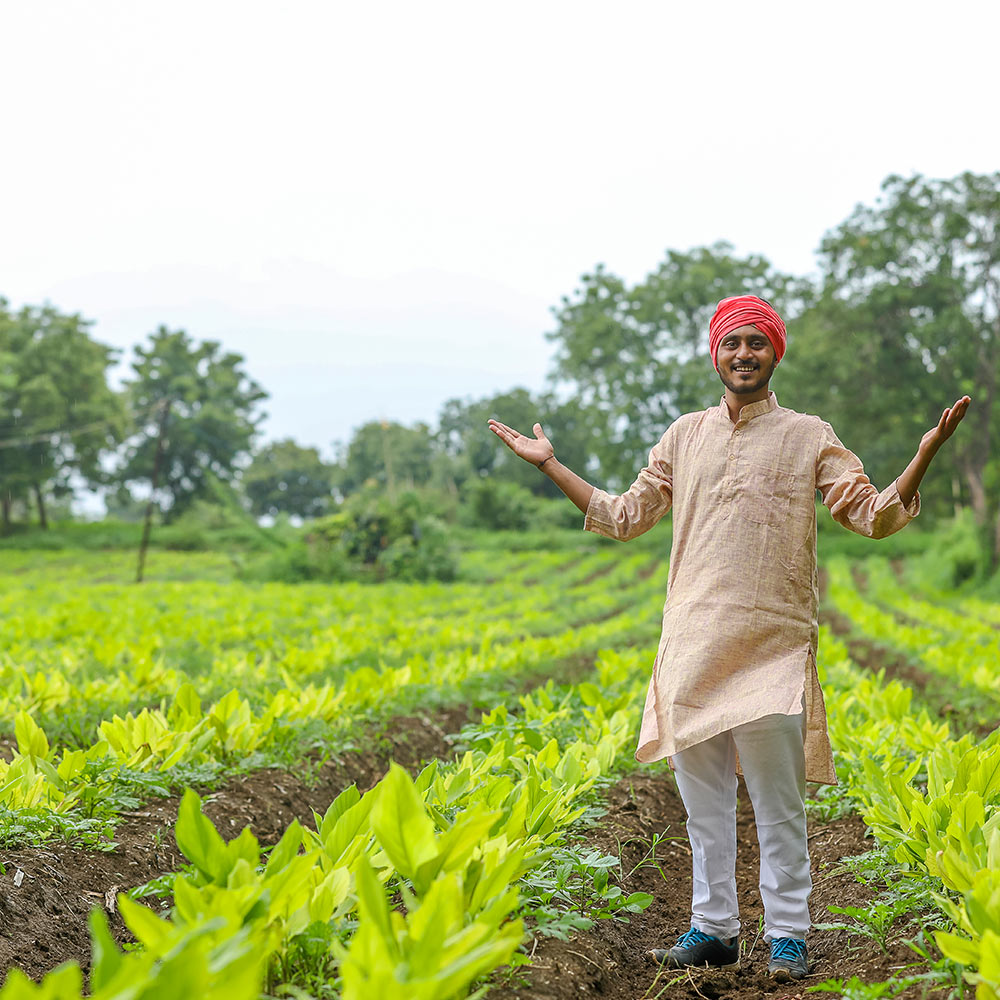In continuation of Part 1 of the Turmeric cultivation series. Here we present the further steps of selecting Planting materials and protection methods
Planting Material

Turmeric seed rhizomes from the previous harvest are used for the cultivation of turmeric in the next crop rotation cycle. In case you are cultivating it for the first time then you can buy them from the market or local agricultural body. If you are opting for the organic growth of turmeric, you must collect seed rhizomes from organically cultivated farms. For commercial production, high-yielding varieties such as Suguna, Krishna, Sudarshana, Sugandham, Roma, and Ranga can be used. Both mothers, as well as finger rhizomes, are used for sowing purposes. The mother rhizomes can be sowed in whole or split into two with each having a complete bud. The finger buds are cut into long pieces of 5cms each.
In case you are looking for high-yielding, disease-resistant turmeric varieties, then the Pratibha variety is a good choice. It is one of the two types developed by the Indian Institute of Spices Research through seedling selection. The other variety developed by this method is Prabha. These strains are more resistant to rhizome rot than others.
Planting of Turmeric Seeds

The turmeric seeds are often kept beneath moist straw and left for sprouting before sowing. The planting time in India is typically just after the pre-monsoon showers. This period varies from state to state. For example, it is around April in Kerala, May in parts of Maharashtra, Karnataka, February in Telangana and Andhra Pradesh.
Mostly for a good crop and best yield farmers are using natural fertilizers, animal dung, without any chemicals or harmful pesticides. Turmeric is a plant that needs heavy manuring. Hence, the rhizomes are covered with rotten cattle manure and then sowed. They can also be covered with our NutriRich Organic compost. It provides energy for microbial buildup and also provides soil with all the organic nutrition to enhance the soil structure, water, and nutrient retention.

Our NutriRich Organic Compost is made up of well-decomposed organic wastes like plant residues, animal dung, and urine earth from cattle sheds, waste fodder, with Neem powder and oil, and rich source of NPK, etc. Compost does several things to benefit the soil that synthetic fertilizers cannot do. First, it adds organic matter, which improves the way water interacts with the soil. In sandy soils, compost acts as a sponge to help retain water in the soil that would otherwise drain down below the reach of plant roots (in this way, it protects plants against drought). In clay soils, compost helps to add porosity (tiny holes and passageways) to the soil, making it drain more quickly so that it doesn't stay waterlogged and doesn't dry out into a bricklike substance. Compost also inoculates the soil with vast numbers of beneficial microbes (bacteria, fungi, etc.) and the habitat that the microbes need to live. These microbes can extract nutrients from the mineral part of the soil and eventually pass the nutrients on to plants resulting in a rich yield of the crop.
Powdered neem cake is mixed with soil and is applied in the pits prepared for sowing. Approximately, 1000kg rhizomes are needed for planting in one acre of land. If turmeric is being used as an inter-crop then the seed rate can be as low as 125 kg per acre.
Turmeric Plant Protection
To protect the turmeric plant from pests and diseases, regular field surveillance is necessary. This is more important in the case of organic farming. For non-organic farming, farmyard manure is applied as the basal dose.
Protecting the plants from diseases, pests, and disease management is of utmost importance, especially in organic farming. Various strategies can be adopted such as:
- Regular field surveillance
- Understanding the life cycle of pests and predators
- Appropriate phytosanitary measures
......................Stay tuned and follow our page to know the further best farming techniques in the upcoming Turmeric Harvesting phase.....

